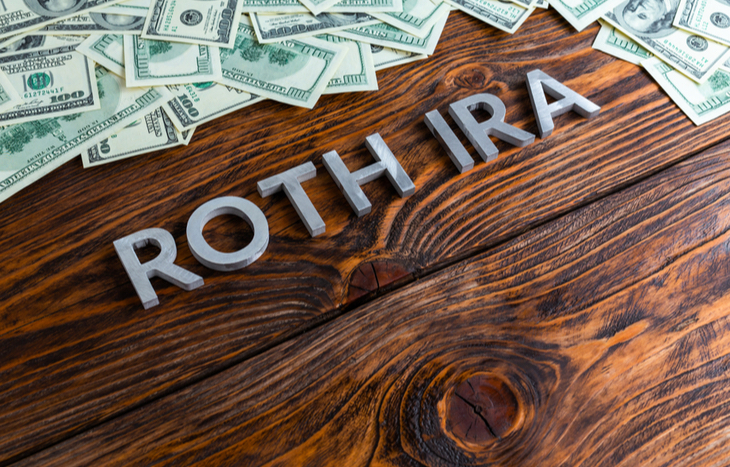What is a Mega Backdoor Roth IRA?
There are many reasons to open and contribute to an Individual Retirement Account (IRA), particularly a Roth IRA. Roth accounts are pre-tax. This means all contributions grow tax-free so long as they’re invested. Unfortunately, there are caps on these investments. Both if you’re eligible for a Roth IRA and in how much you can contribute in a given year. in fact, it’s why more and more high-net-worth individuals are turning to mega backdoor Roth IRAs.
While the name sounds a little over-the-top, the benefits of a mega backdoor Roth IRA are hard to overstate. These plans not only remove the Roth contribution barrier for high-income earners. They also allow people to contribute even more of their income to a tax-advantaged account, above and beyond IRS limits.
Here’s a closer look at mega backdoor Roth IRAs: how they work, how to set one up and why they’re a popular tool for tax-free investment growth.

A Look at Contribution Limits
As mentioned, there are limits on how you can save for retirement using a Roth IRA. For starters, your income needs to stay below specific high-earner thresholds: under $144,000 if you file individual taxes each year and under $214,000 if you’re married and filing jointly. Taxpayers exceeding these levels aren’t eligible to make Roth contributions.
If you are eligible to make contributions to a Roth IRA based on your income, you’re still capped at how much you can set aside. Here are the IRS limits for contributions in 2022:
- Individuals can contribute $6,000 to a Roth IRA annually
- If you’re over 50, you can make another $1,000 in catch-up contributions
To understand how the mega backdoor Roth IRA strategy works, it’s also important to consider 401(k) contribution limits. If you’re under 59½, you’re capped at $20,500. Yet, the federal limit for total dollars contributed to a 401(k) in 2022 is $61,000. Herein lies the crux of the mega backdoor Roth IRA strategy.
How the Mega Backdoor Roth IRA Works
If you’re capped at $20,500 in 401(k) contributions, but the federal limit for total dollar contributions is $61,000, it creates a major contribution gap between what you put away for retirement each year and what you’re allowed to put away. This opens the door for a mega backdoor Roth IRA.
The mega backdoor Roth IRA works by transferring after-tax contributions to a 401(k) into a Roth IRA using in-service distributions. Individuals can contribute up to the difference between regular contributions to their 401(k). This includes employer match and the federal limit of $61,000. For example, if there’s no employer match and no after-tax contribution restrictions by the plan, an individual could feasibly save another $40,500 to their Roth IRA each year!
Not able to make in-service distributions? No worries! You can execute this same strategy within an employer-sponsored 401(k). Moreover, you will not have to remove money from the account.
Requirements for a Mega Backdoor Roth IRA
While the practice of creating a mega backdoor Roth IRA is simple enough, there are a few important criteria that dictate whether it’s possible. Much of it depends on the plan structure of your employer’s 401(k) program:
- You must work for a company that offers a 401(k) program
- The 401(k) program must allow for after-tax contributions
- 401(k) program must also allow for in-plan Roth conversions
- The 401(k) program must allow for in-service distributions
This is where some individuals run into trouble. For example, the employer’s 401(k) plan may put a cap on the after-tax contributions an employee can make in a given year. They might limit contributions to 10% of the employee’s salary or cap contributions at a dollar figure like $20,000. This effectively limits the growth potential of the mega backdoor Roth IRA, since it sets the contribution limit short of the federal maximum.
Potential Problems with a Mega Backdoor Roth IRA
As you might imagine, creating a mega backdoor Roth IRA comes with a bevy of tax considerations. If investors aren’t careful, they could find themselves with an accidental tax bill. It’s important to work with a qualified CPA or tax professional to set up both the contribution conversion process and in-service distributions, to avoid any confusion and to avoid taxable events. This includes making sure that you’re not claiming after-tax contributions as deductions on your annual income taxes!
When to Use the Mega Backdoor Strategy
The mega backdoor Roth IRA strategy is for individuals who have already maxed out their 401(k) contributions, and who want to set aside more funds for retirement in a tax-advantaged account. Typically, this means high-net-wealth individuals and high-income earners who may otherwise find themselves disqualified from Roth accounts.
Like a regular backdoor strategy, it’s a great way to get more after-tax dollars into investments that will grow tax-free over the life of the investment. Individuals planning far into the future can use the mega backdoor Roth IRA strategy to boost their accumulation power by orders of magnitude.
Capitalize on Federal 401(k) Contribution Limits
A mega backdoor Roth IRA isn’t just a way to circumvent the restrictions associated with Roth IRA rules—it’s also a way to massively expand the potential savings associated with them. Instead of a $6,000 maximum contribution limit each year, you’ll have the power to set aside up to $40,500 in 2022! This is a massive upgrade in tax-free retirement savings. When you consider the power of compound interest on these savings, it’s clear that few investment strategies offer such prolific potential.





